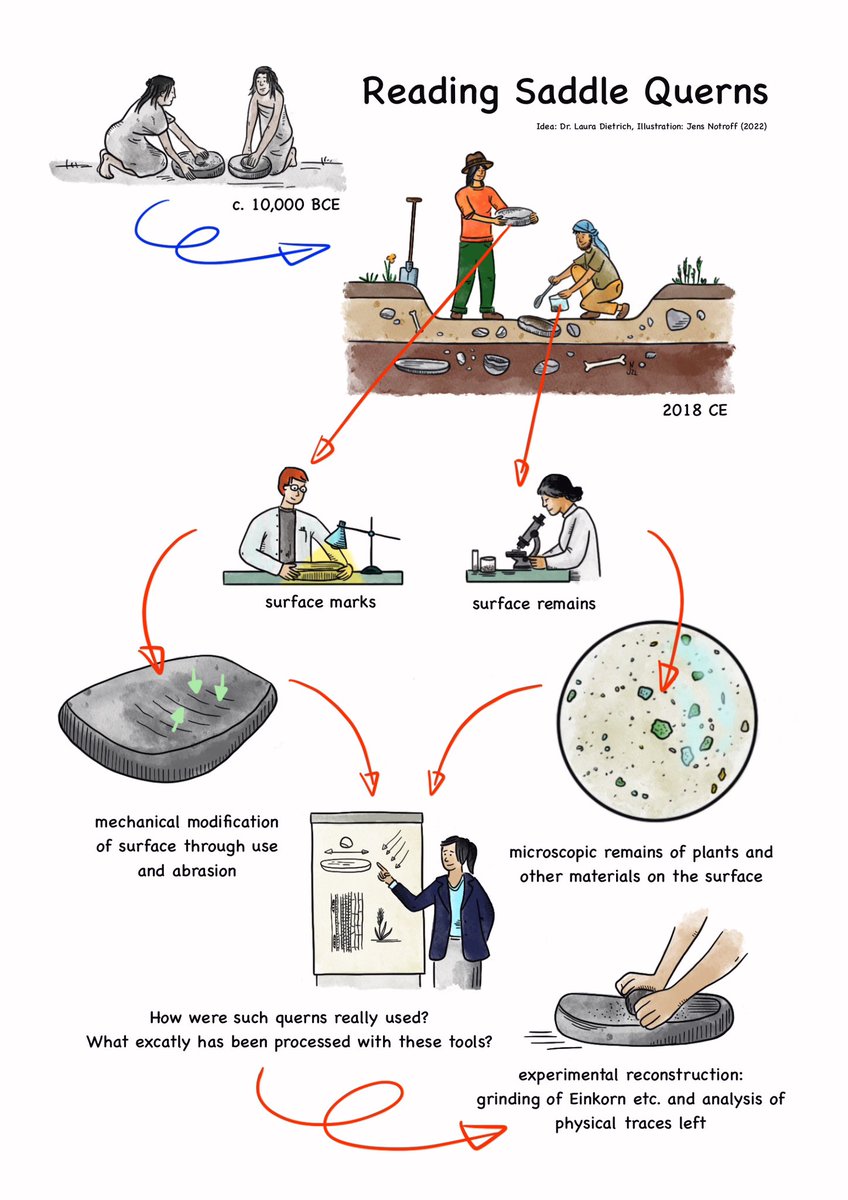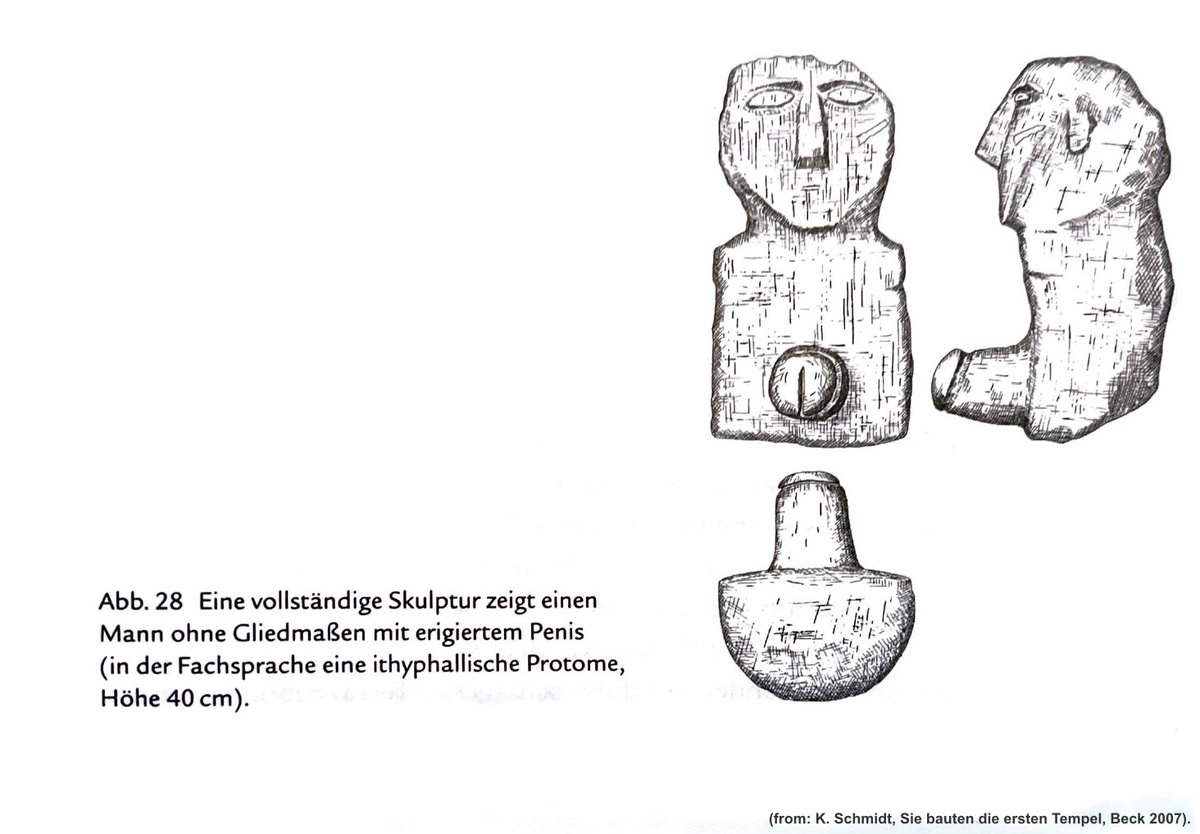Office with a view, or: Yet another day at the #excavation.
Some illustrated "Tale from a Tell" for this #FieldworkFriday. 1/
(Long version here: jens2go.medium.com/a-digging-on-a…)
Some illustrated "Tale from a Tell" for this #FieldworkFriday. 1/
(Long version here: jens2go.medium.com/a-digging-on-a…)

4.30 o'clock. Ante meridiem. It's still dark outside, the dim light barely enough to distinguish a black thread from a white one: The muezzin just called the faithful to prayer and, probably unintentionally, the archaeologists to finally get up as well.
2/
2/

Breakfast at such an early hour basically consists of not more than some strong tea, a slice of soft white flatbread (which will be rather dry within the hour), and a handful of olives ...
3/
3/

... taken in the quiet and still fresh morning air of the excavation house's courtyard in the light of setting stars and a single light bulb. Actually, it's too early for an honest breakfast too.
4/
4/

On leaving the historic oriental brick-house in the old part of this eastern Anatolian town, everyone grabs a piece of equipment or provisions for the day to come and one after another heads through the narrow alleys towards the waiting mini bus and driver.
5/
5/

As we arrive on this early Neolithic site, somewhere up in the mountains of southeastern Turkey, a pale moon is still hanging around a sky only slowly changing from black to blue.
6/
6/

Groups of workmen arrived minutes before from a village down the hill. Dressed in coats and cardigans against the morning coolth, they're waiting for day's work to start while the bunch of students and scientists are collecting tools and instruments, equipment and journals.
7/
7/

Gangs finding together following a long-established system: There's two diggers, one who shovels, and two basket-carriers. Always.
8/
8/

Soon the air is filled with the sound of pickaxes and of chanting and laughing workmen. Soil is shifted, rocks are moved.
9/
9/

Basket after basket of debris is brought out of the trenches. As the dust of history is slowly removed, the ancient remains are rising gradually: Boulders, slabs, and walls pulled back into present-daylight.
10/
10/

And so business is going on. And on. The dusty work only interrupted by a short breakfast. Children from the nearby village are coming around, bringing their fathers and uncles and brothers food and some more water.
11/
11/

Everyone's hungry (and more lively ) by now, so this breakfast is a much more substantial and communicative matter than the sparse and mute one in the very morning.
12/
12/

Over yet another tea (there's always tea, get used to it), over some cheese and flatbread, over tomatoes and cucumbers and olives, conversations are drifting around the table for half an hour of otiosity.
13/
13/

Half an hour of lethargic rest in the shadows; the sun - not shy at all anymore - now showing its true nature, relentlessly burning down from a shimmering sky.
14/
14/

Back in the dust soon the clanking of picks loosening dirt and rubble can be heard again. A group of visitors, marvelling at the site's sight, takes the chance to curiously quiz the archaeologists before returning to their air-conditioned busses.
15/
15/

Workmen continue to dig; students are busily taking notes, picking out pieces of charcoal and fragments of flint tools and stone vessels from the excavated soil, collecting them in buckets and plastic bags - each labelled with date and information on their exact find spot.
16/
16/

Dirt is sifted dry and wet (a rather dusty respectively muddy business); a steady flow of find material is coming towards provisional lab and office facilities in the excavation's 'headquarters' of construction containers and tents upon the next hill crest ...
17/
17/

After 8 hours of digging, just when midday's heat is reaching its peak, everyone is happy to call it a (field) day. Bidding good bye, the crew of workmen is boarding tractors & trailers, leaving for that small village down the hill - dragging behind a dustcloud all the way.
18/
18/

As the bus is slowly crawling down the dirt track everyone's trying to find a comfortable position, finally taking another short rest - legs stretched, the dusty hat pulled down over the eyes.
19/
19/

Back in town, as we leave the car and head through heated-up narrow old-town alleys towards the excavation house, buckets and pieces of equipment in hand ...
20/
20/

The muezzin is calling the faithful to prayer again. Well, for the archaeologists it's lunchtime for now; the cook is already waiting.
21/
21/

Of course the meal is not finished without the mandatory tea (you get the idea), so showers still have to wait for yet another 10 minutes or so. There's got to be time for that.
22/
22/

But even now work isn't done for the day. The buckets brought back from site are emptied, the finds carefully cleaned and washed, sorted, and spread onto coarse screens to let them dry in the sun.
23/
23/

• • •
Missing some Tweet in this thread? You can try to
force a refresh


















